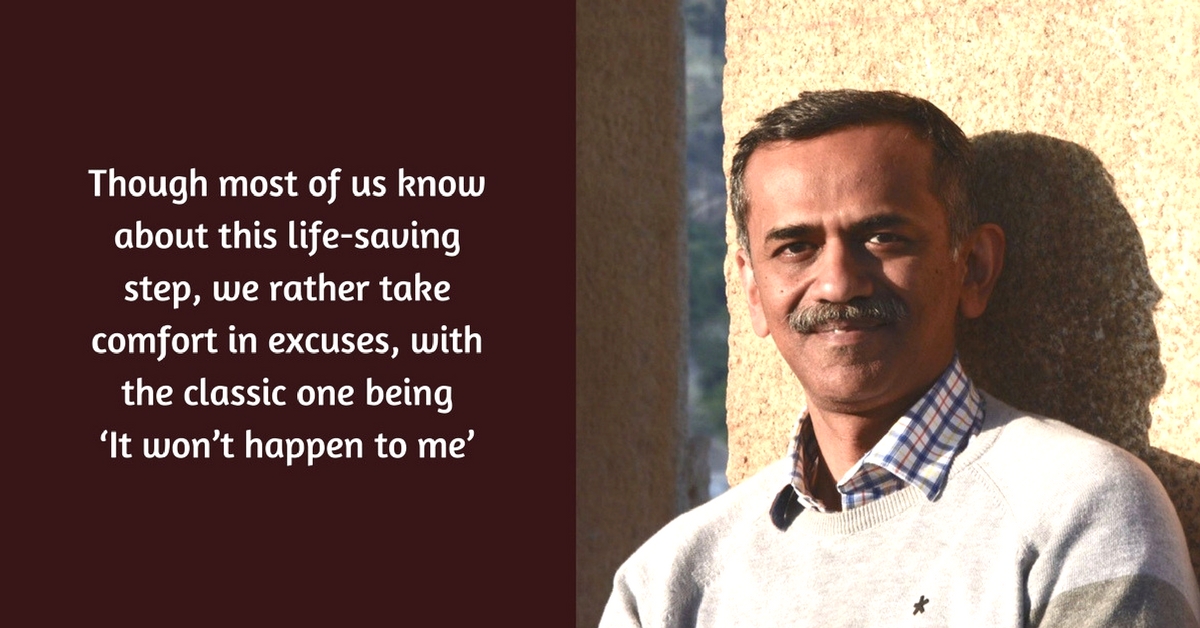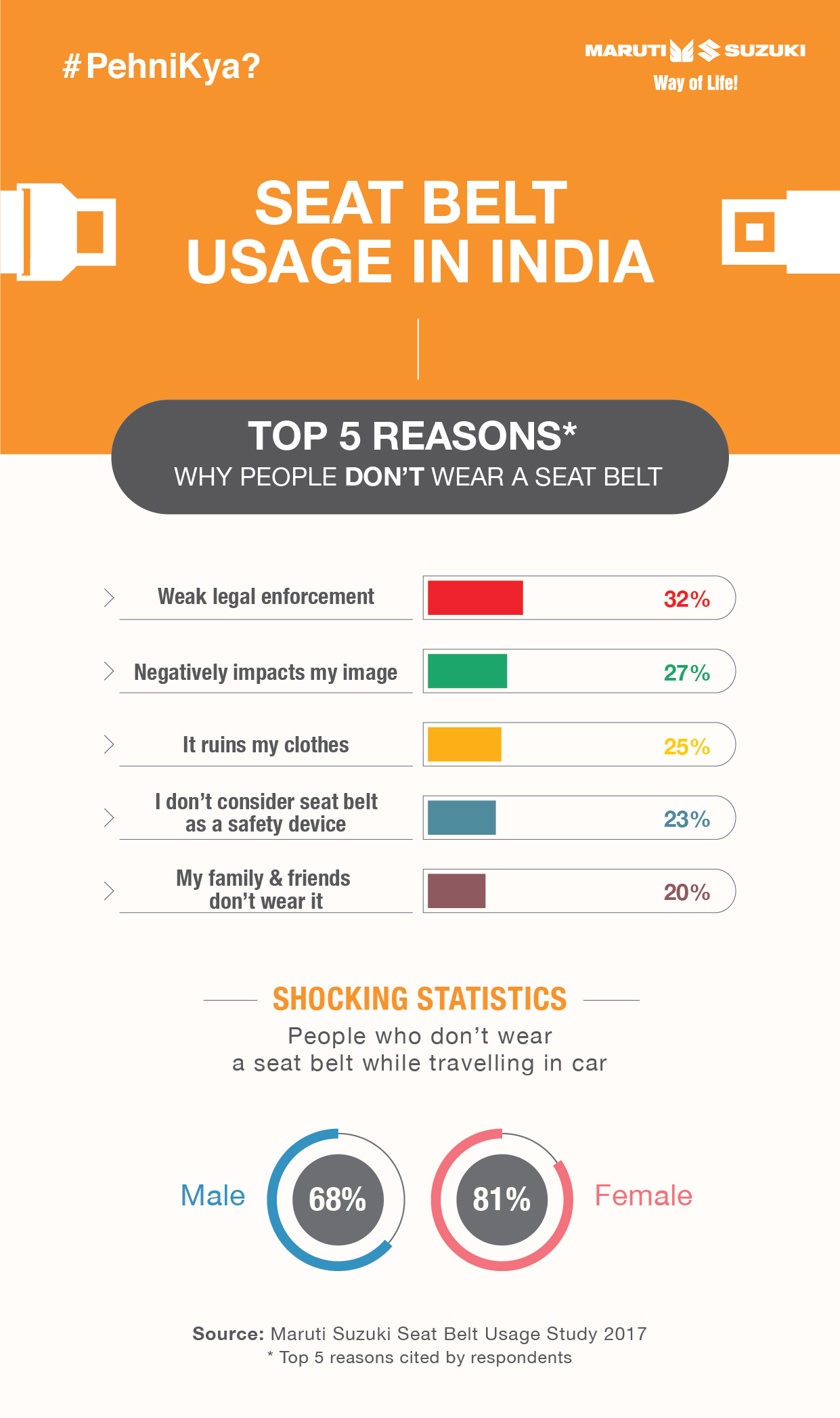One Simple Step Saved This Man’s Life When His Cab Rammed Into A Truck
Despite being rarely practiced in India, the habit of wearing a seatbelt while travelling in a car is known to have saved lives even during the worst of road accidents.

Naimish Dave, a strategy and performance improvement consultant, was returning home from the Bengaluru airport in a taxi when the vehicle, he was travelling in, suddenly rammed into a stationary truck parked on the wrong side of the road.
“It was almost midnight, and the taxi driver was someone reliable, so I was not apprehensive of monitoring him. Since the journey back home was a long drive, sitting in the rear I’d decided to watch a movie on my laptop and was halfway through it when the crash happened,” narrates Naimish to The Better India.
What saved a rear-seated Naimish and the taxi driver’s lives were the seatbelts that both of them were wearing.

Despite being rarely practiced in India, the habit of wearing a seatbelt while travelling in a car is known to have saved lives even during the worst of road accidents.
And it is not just the responsibility of the person driving the car to wear the seatbelt. Most of us would grudgingly admit to not wearing the seat belt in a car, especially while sitting on the rear seat.
What we don’t realise is that the reluctance to buckle oneself up could prove detrimental to our survival, given the surge in the number of road accidents on our own streets.
The horrific impact of a crash are made plain by Naimish himself.
“Well, my spectacles flew off my face, my laptop on which I was watching a movie was flung ahead, and the connecting pin of my earphones sheared in the socket of the laptop. The seatbelt knocked the air out of my lungs, and I blacked out for a few seconds”, he remembers.
Upon regaining his senses, Naimish got out of the taxi and slowly absorbed the situation, and checked whether the driver was alright too. Like Naimish, except for blacking out, he was relatively fine. Both had suffered no external injuries though the car was completely wrecked.
Fortunately, one man in a car behind their taxi offered Naimish a ride to a hospital close to his home. “Initially, I was planning to head back home. But in hindsight, I felt that a medical check-up would do no harm and help rule out all misgivings,” he says.
However, it was at the hospital where Naimish found that he had suffered many internal injuries as a result of the crash.

“The CAT scan revealed that my large intestine had got dislodged from the posterior abdominal wall, and there was minor internal bleeding. There were mild hairline fractures on the ribs where the seat belt restrained my movement. I had to undergo abdominal surgery and was in the hospital for ten days,” he elucidates.
According to the doctor, who oversaw Naimish’s case, the seatbelt had averted him from being flung ahead and hitting the front seat, or possibly the windscreen, which would have probably been fatal or resulted in graver injuries. Wearing the seatbelt in a car was an old habit that Naimesh always practiced, irrespective of where he sat and that played a defining role on the night of the accident.
“In short, wearing the seatbelt saved my life that night,” he adds.
This leads us back to the question again: How many of us really buckle up while travelling in a car?
In a ‘Seatbelt Usage in India’ survey conducted by Maruti Suzuki India, across 17 cities, in 2016, it was found that only one in four people wore a seatbelt while travelling in a car. When it comes to rear seat passengers, the numbers are appallingly low at 4 percent.
A road accident report by Ministry of Road Transport and Highways (MoRTH) revealed that in 2016 at least 15 people died in road accidents because of not wearing seatbelts.
“Every time I mention this incident to people, they are amazed that I was wearing a seat belt while sitting in the rear. When I travel in a taxi, most of the times I have to extract the seat belt buckle, which has been pushed inside the seat because passengers find the buckle uncomfortable when they are sitting. Worse is when the seat covers don’t have a slot to remove the buckle,” Naimish mentions.
Though most of us know about the life-saving purpose of a seat belt, we rather take comfort in excuses, with the classic one being ‘It won’t happen to me’.

An accident doesn’t take into account where one is seated neither does it announce its arrival.
As per World Health Organization (WHO), wearing a seat belt reduces the risk of fatality among drivers and front seat passengers by 45-50 per cent! The risk of serious injuries comes down by 45 per cent. Among passengers on the rear seat, says WHO, seat belts reduce fatal and serious injuries by 25 per cent.
“Don’t wait for a mishap; I would urge you to wear seat belts all the time—whether in the front seat or the rear,” Naimish adds.
So next time you are in a car, don’t forget to ask yourself and everyone in the car #PehniKya, irrespective of where you are sitting. Your seatbelt might just save your life!
Like this story? Or have something to share?
Write to us: [email protected]
Connect with us on Facebook and Twitter.
NEW: Click here to get positive news on WhatsApp!
If you found our stories insightful, informative, or even just enjoyable, we invite you to consider making a voluntary payment to support the work we do at The Better India. Your contribution helps us continue producing quality content that educates, inspires, and drives positive change.
Choose one of the payment options below for your contribution-
By paying for the stories you value, you directly contribute to sustaining our efforts focused on making a difference in the world. Together, let’s ensure that impactful stories continue to be told and shared, enriching lives and communities alike.
Thank you for your support. Here are some frequently asked questions you might find helpful to know why you are contributing?


This story made me
-
97
-
121
-
89
-
167













